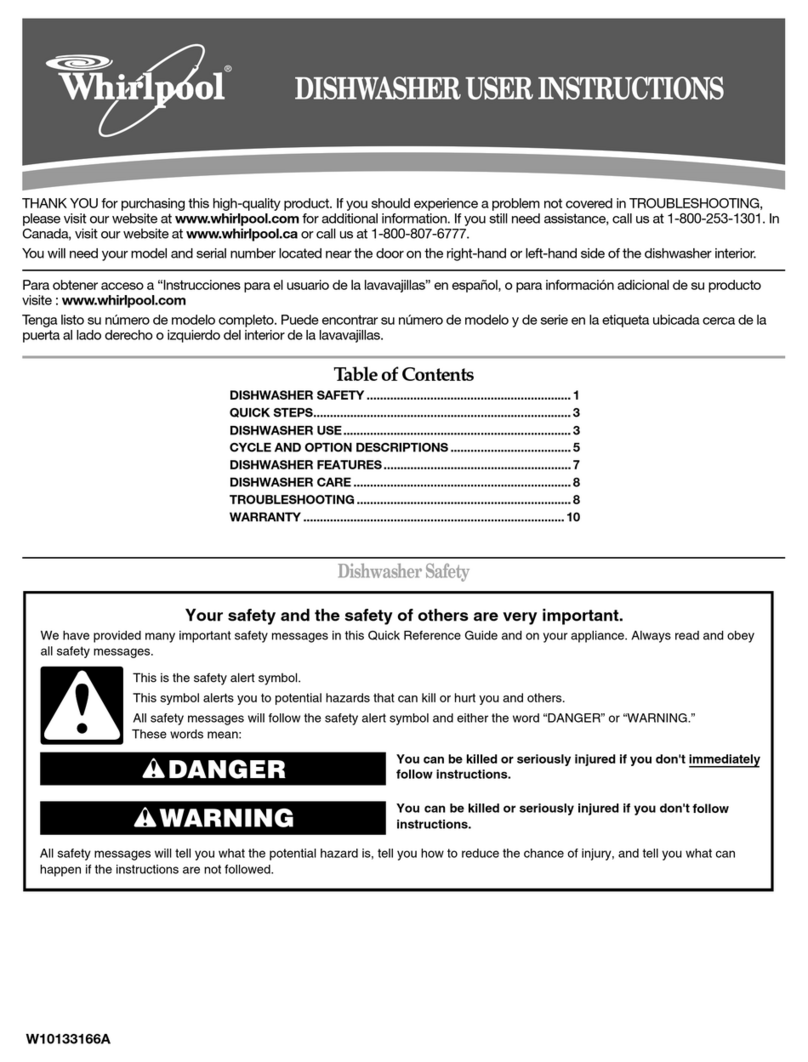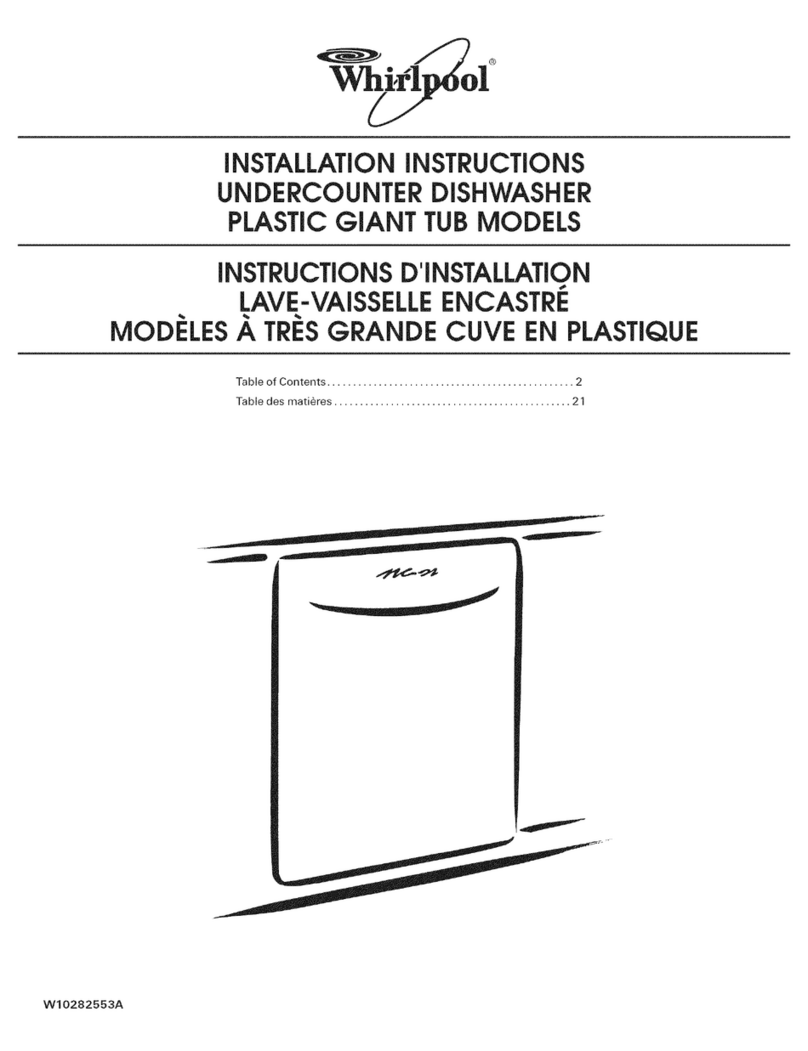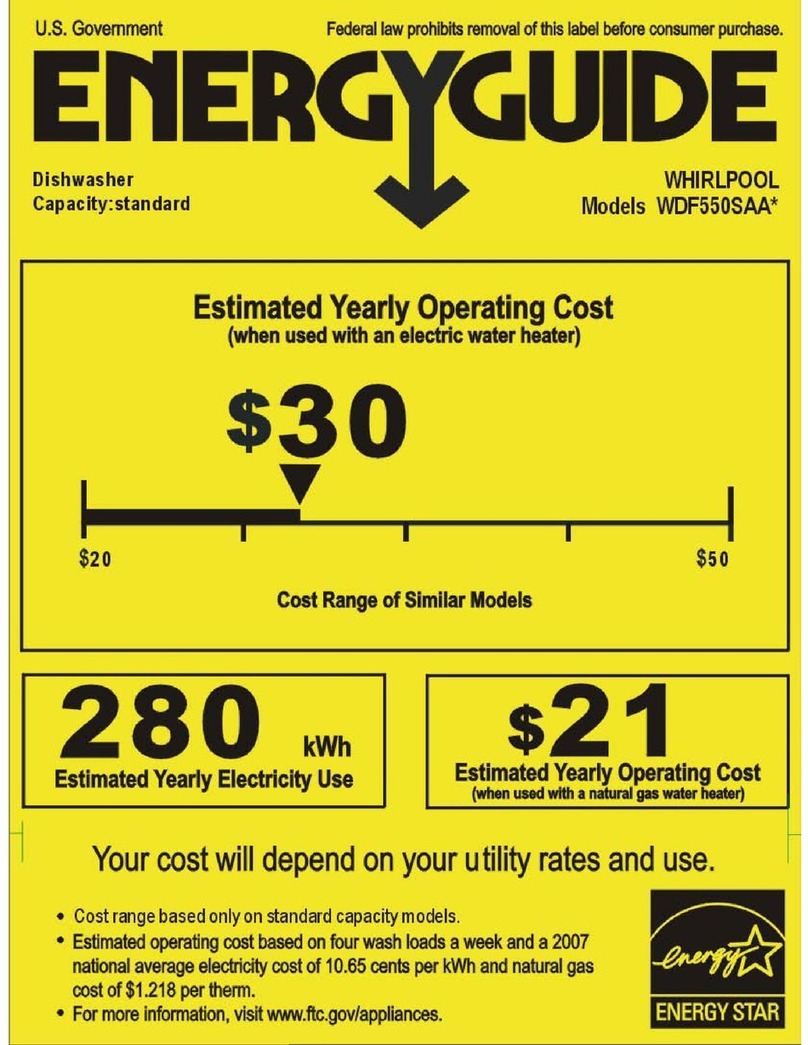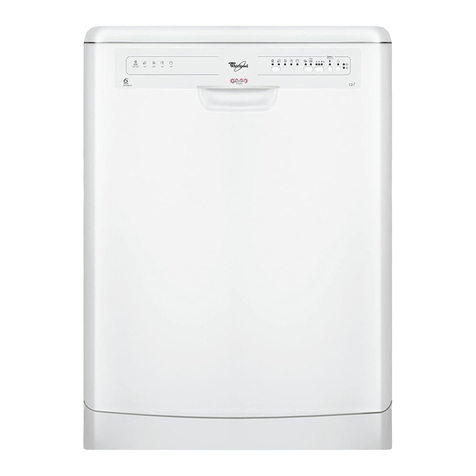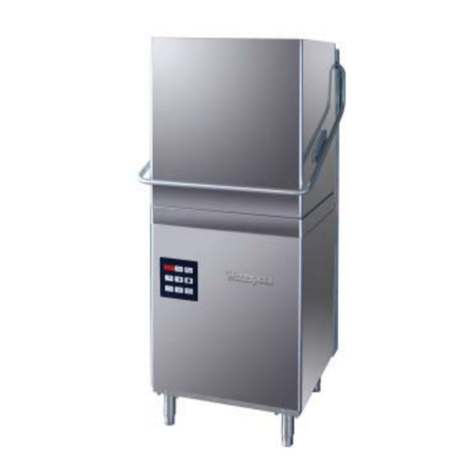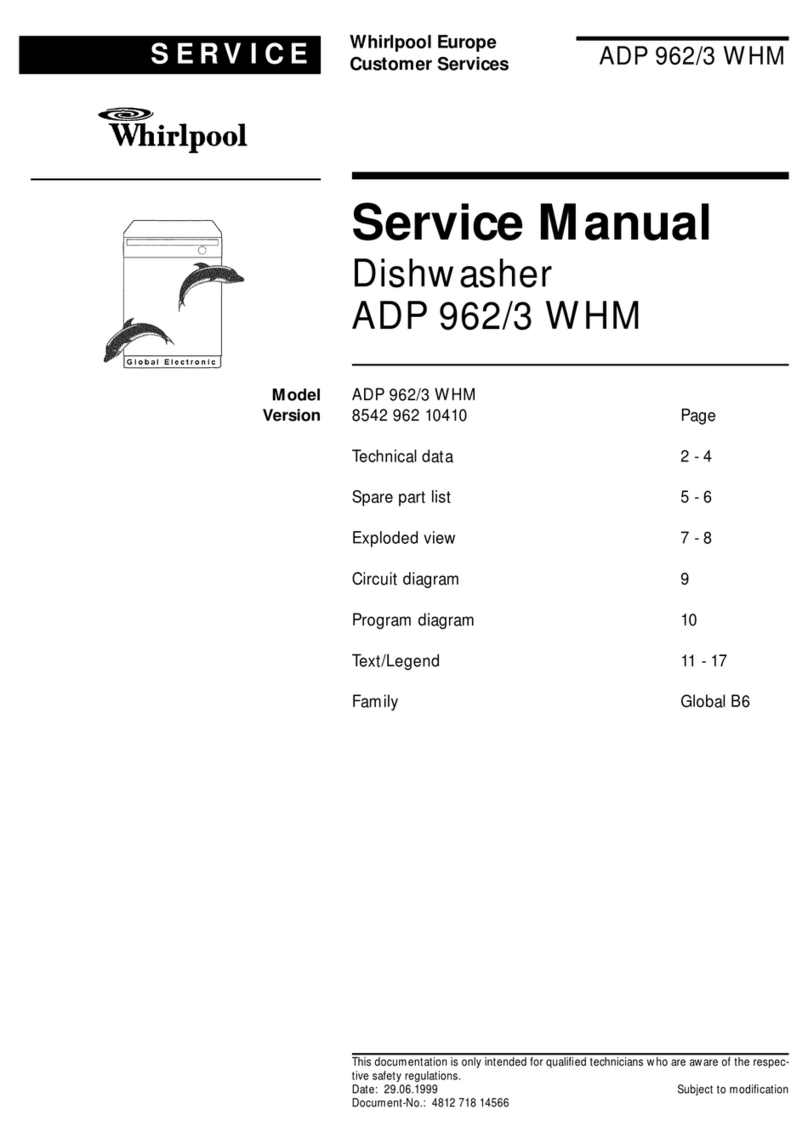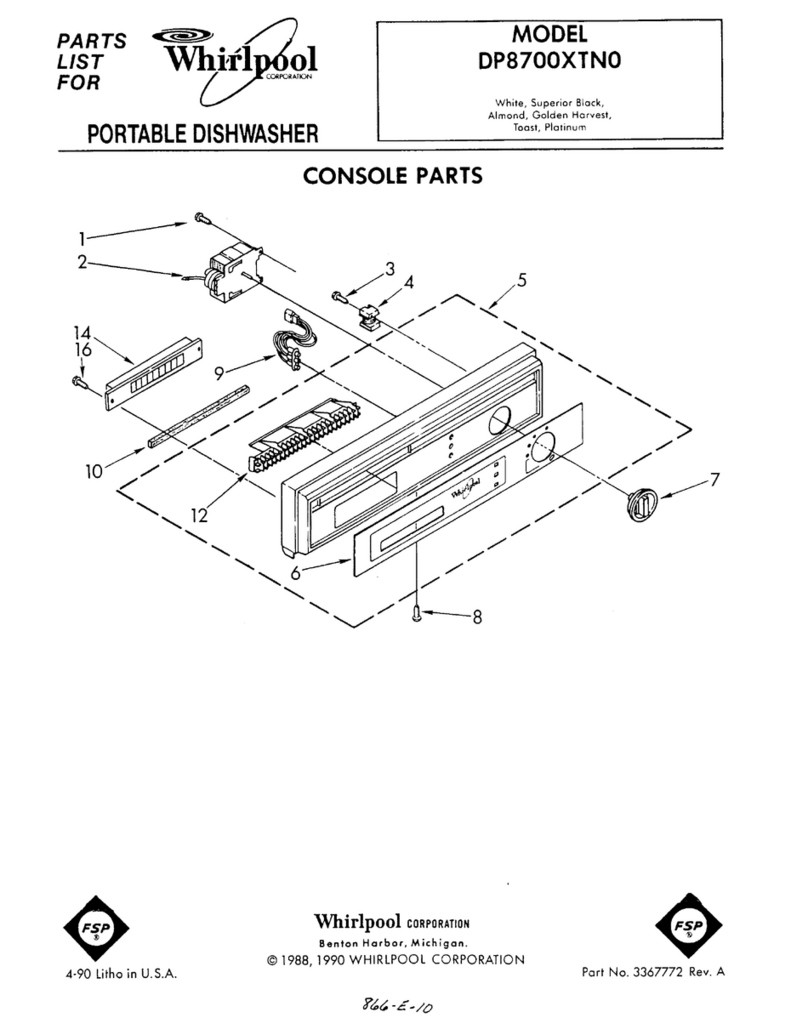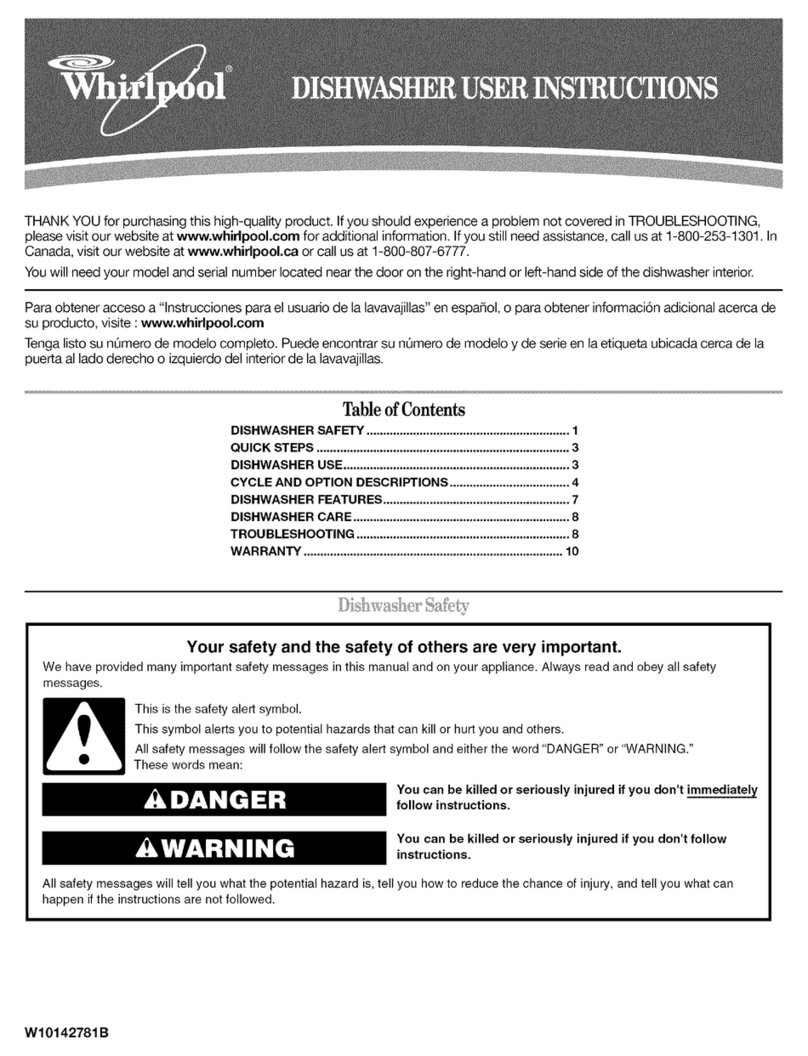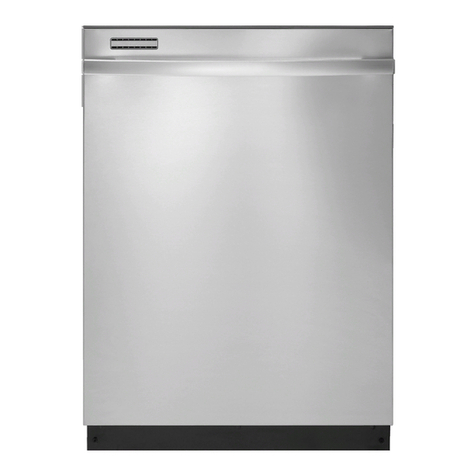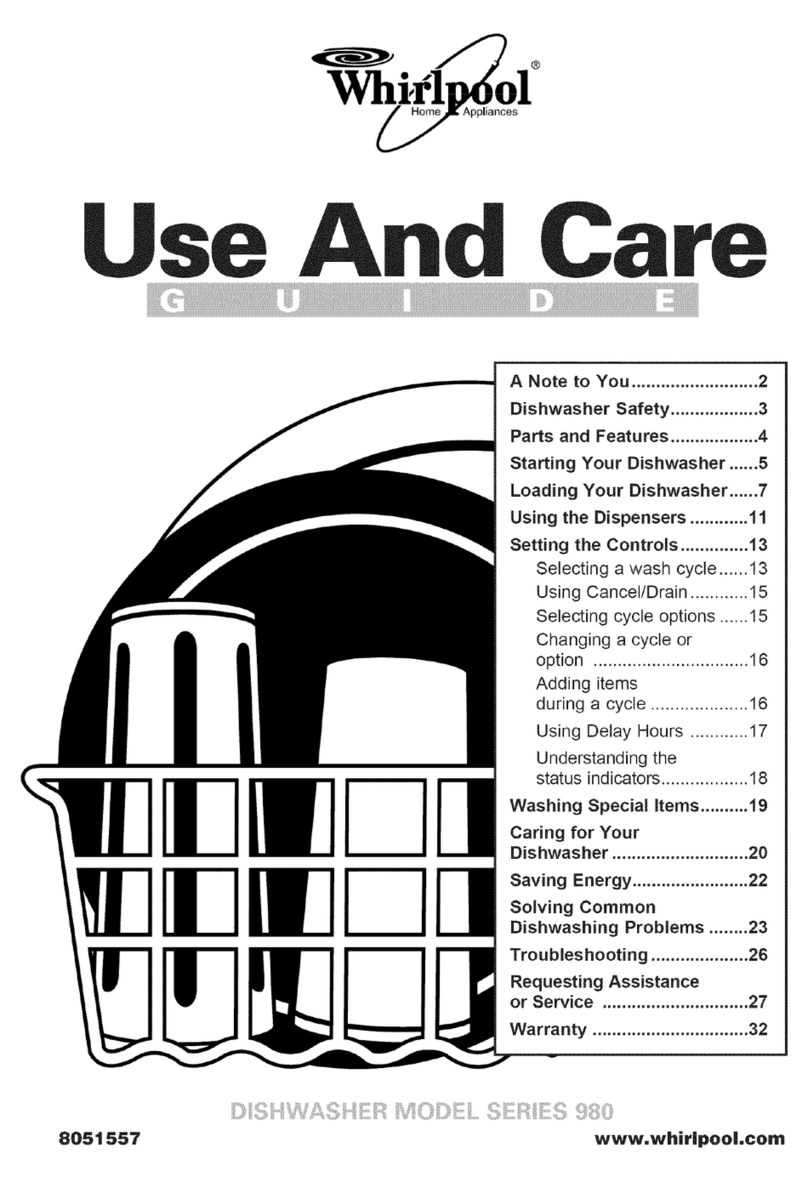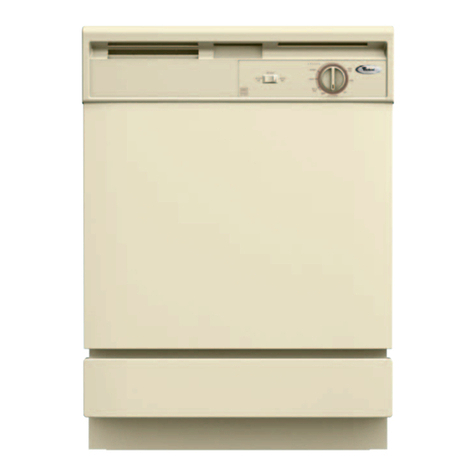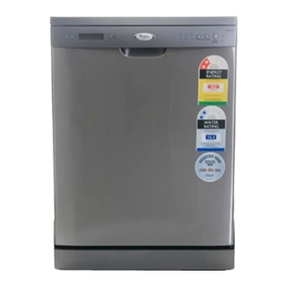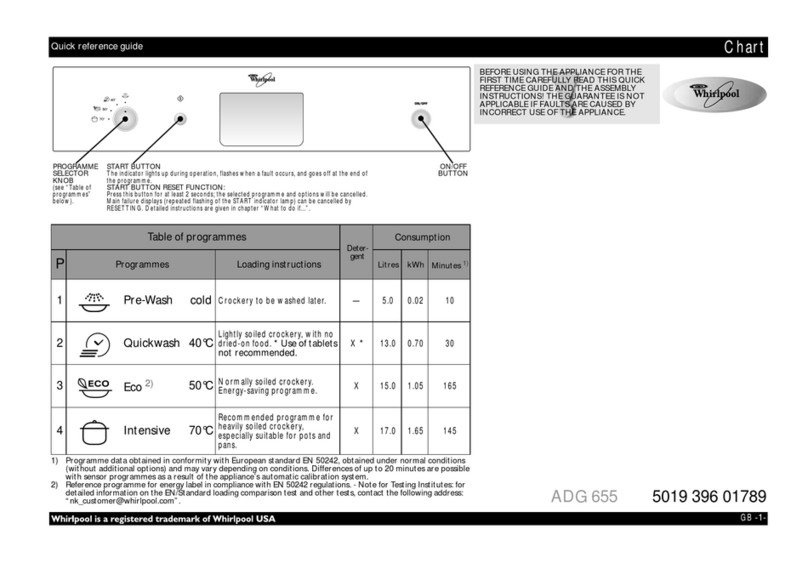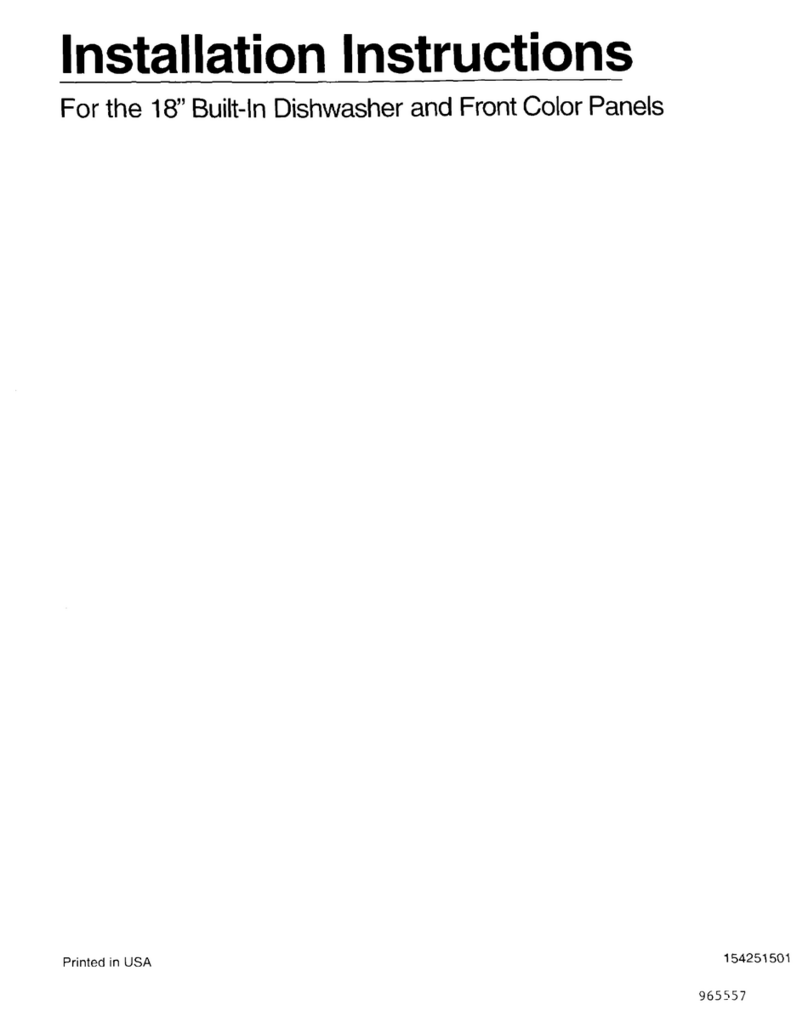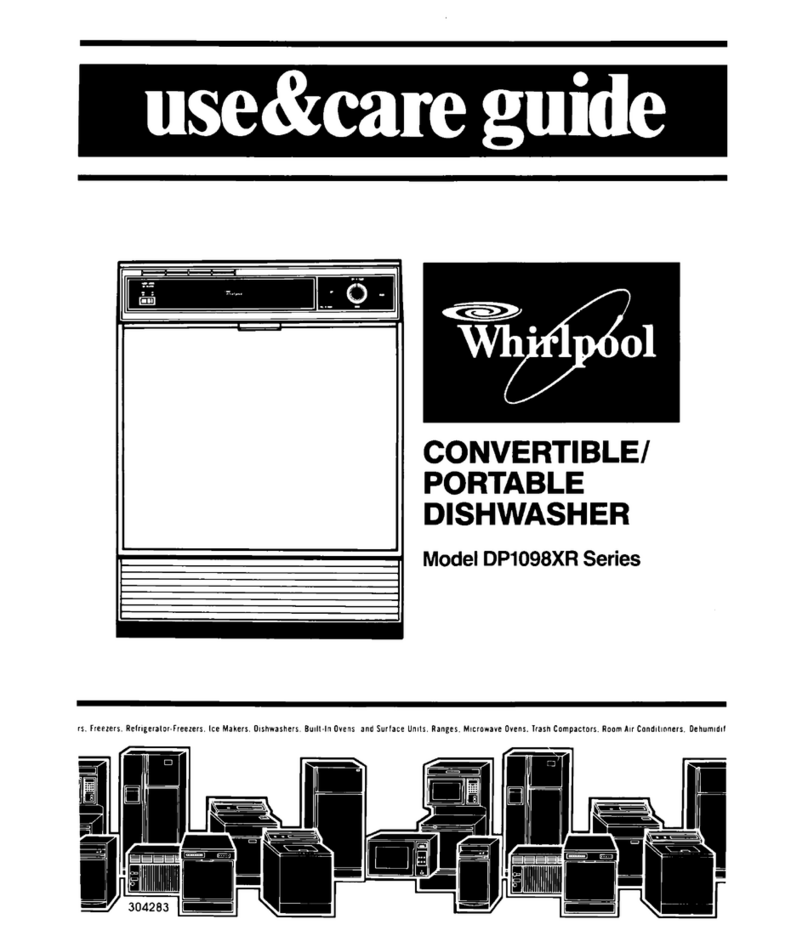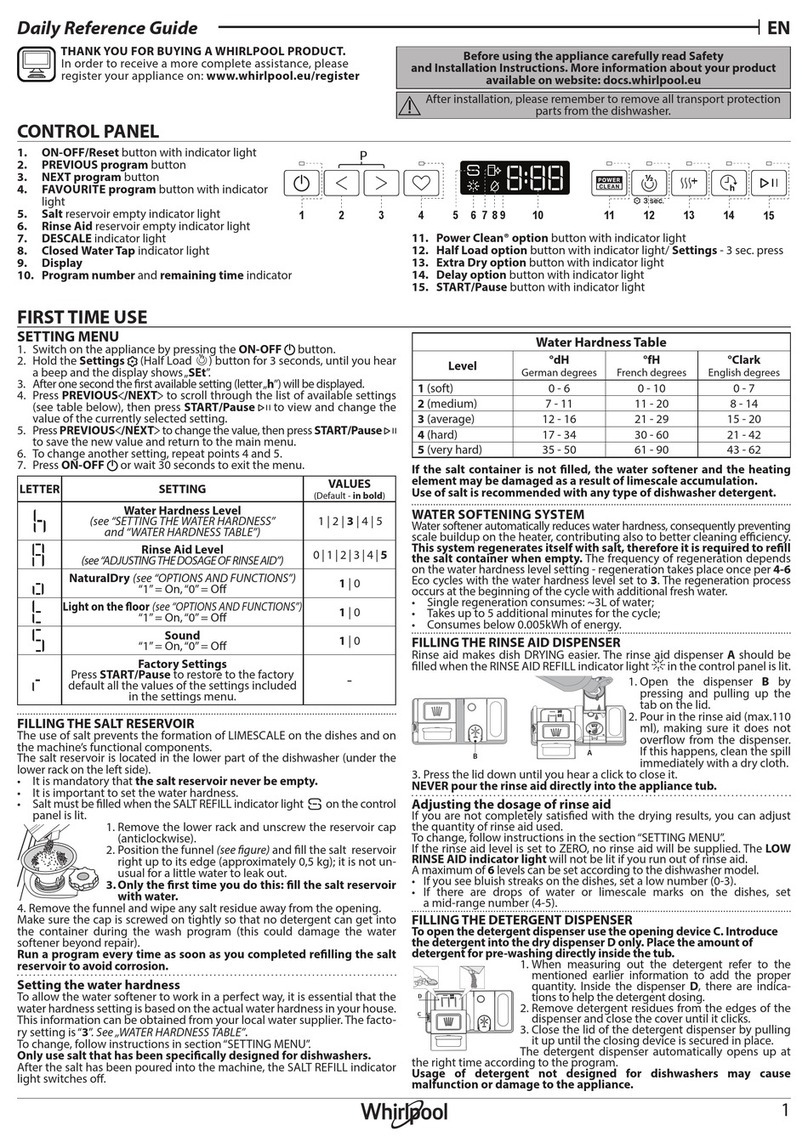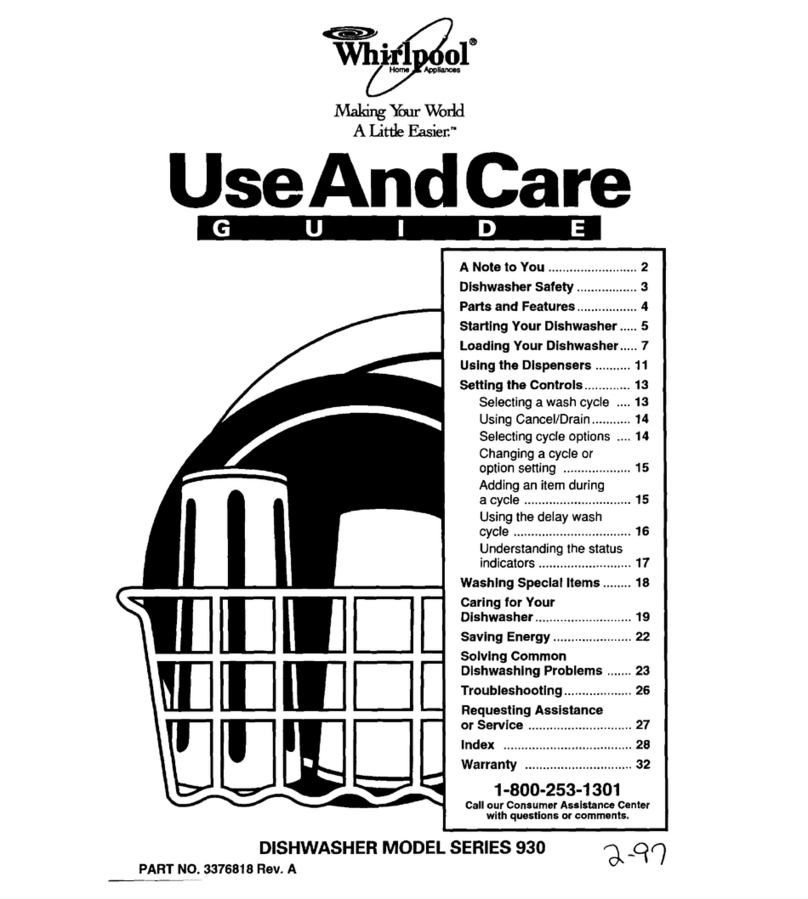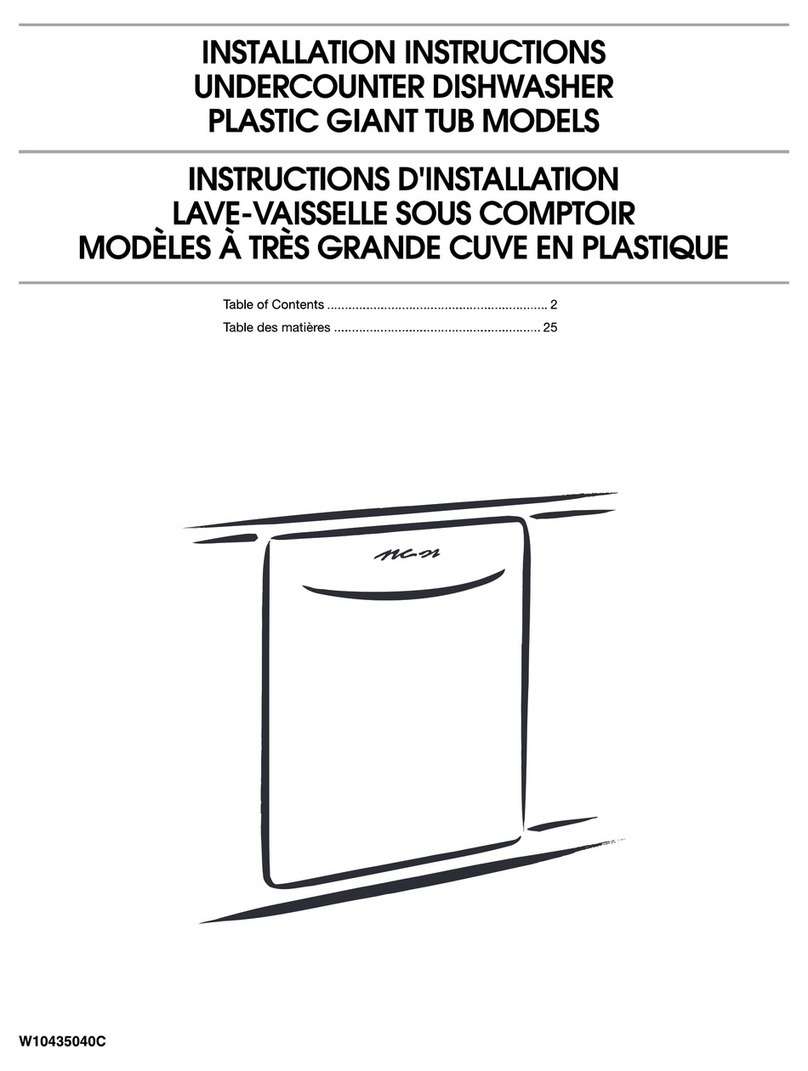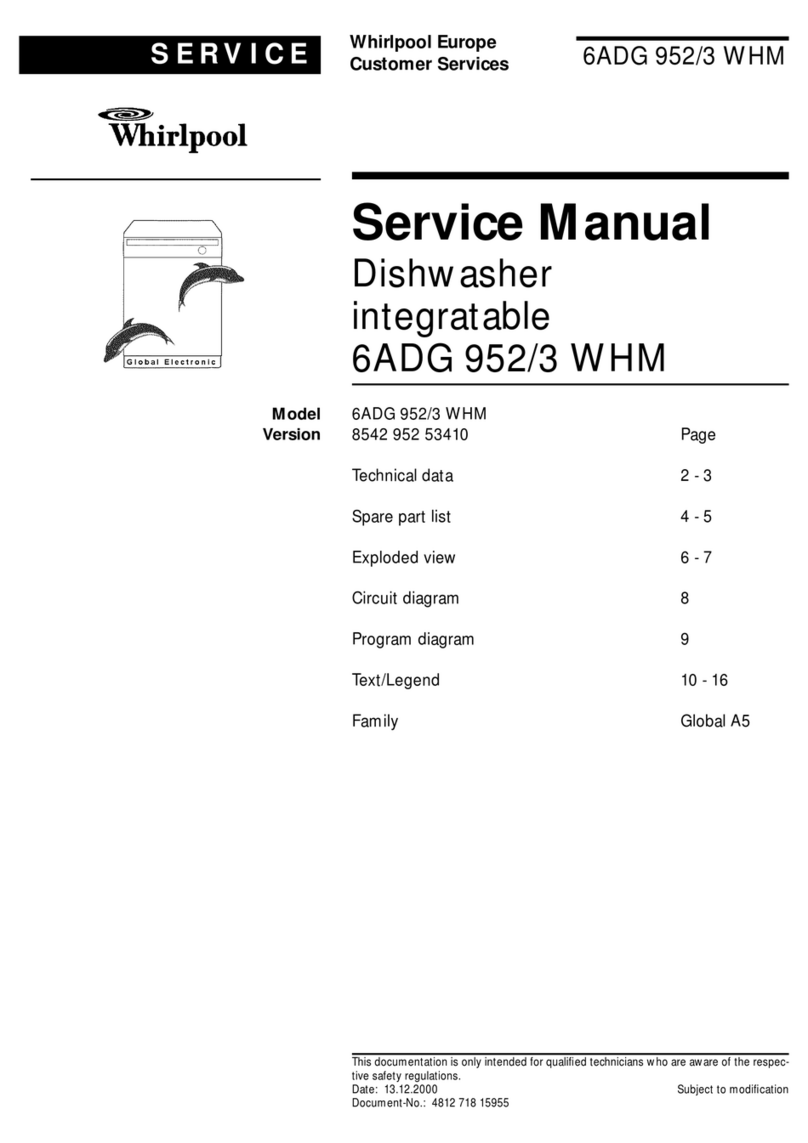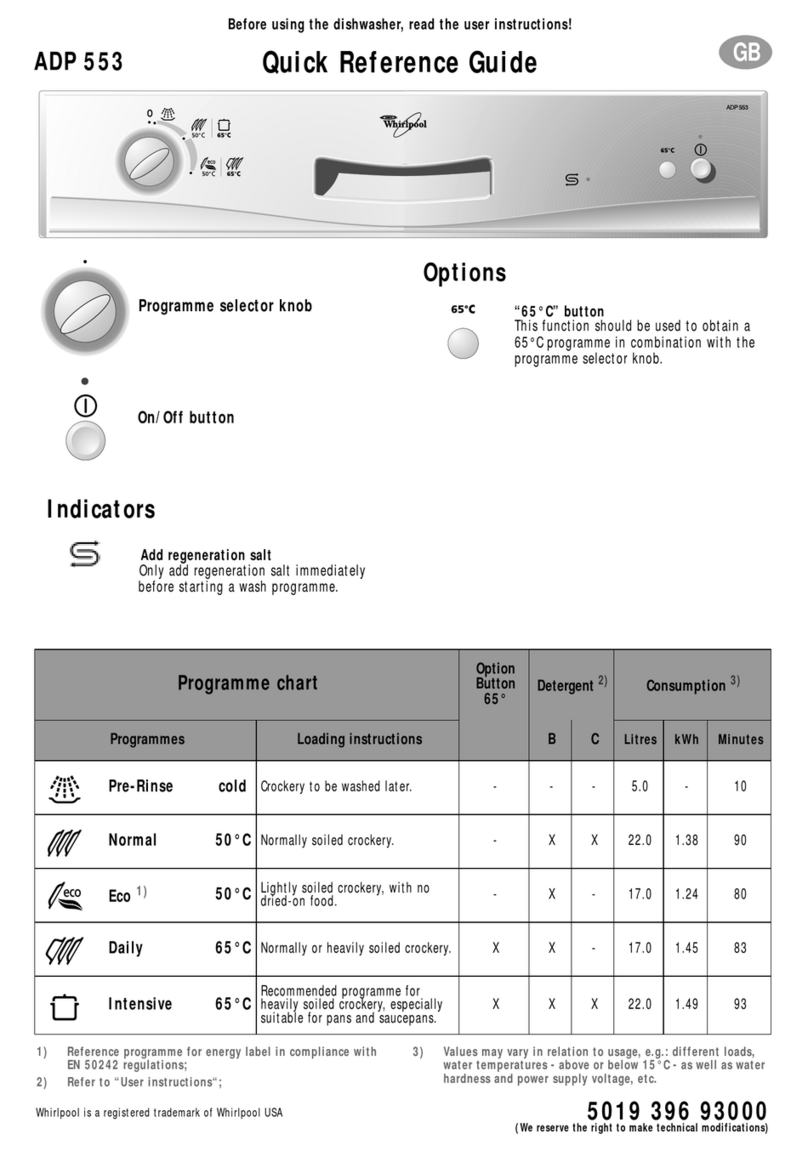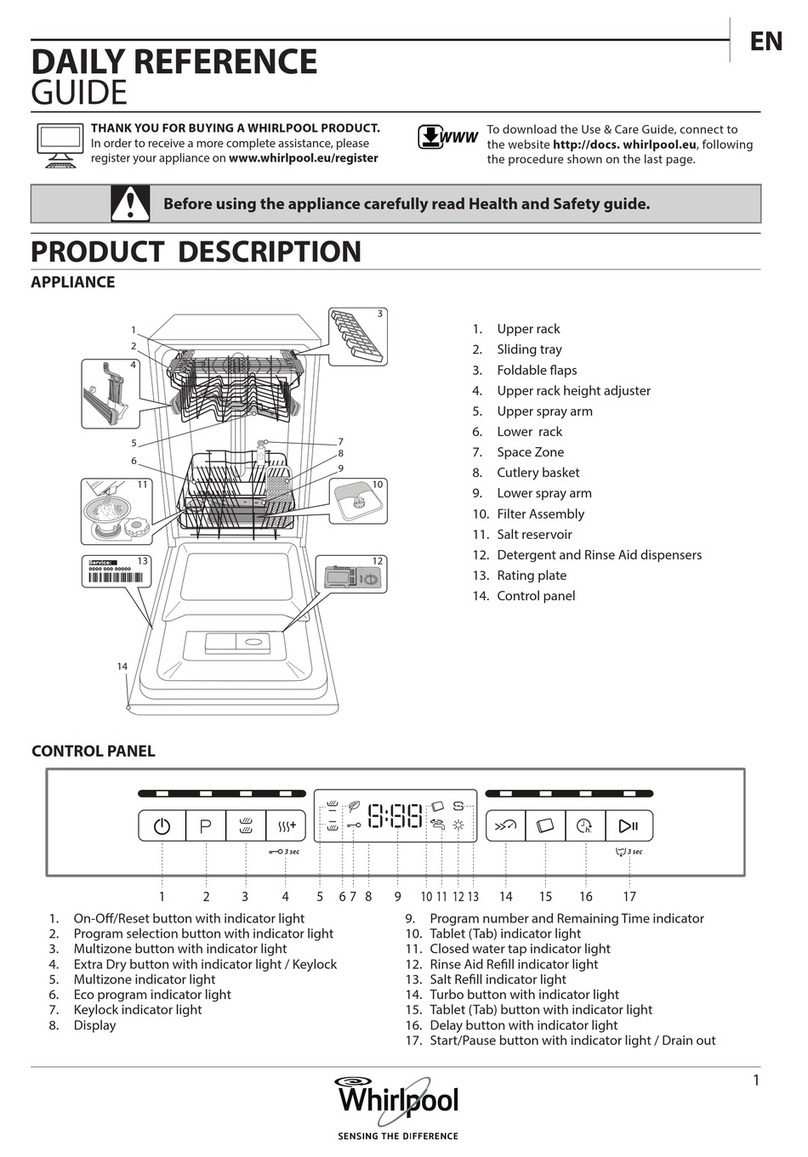ishwasher Safety
Your safety and the safety of others is very important.
We have provided many important safety messages in this manual and on your
appliance. Always read and obey all safety messages.
This is the safety alert symbol.
This symbol alerts you to hazards that can kill or hurt you and others.
All safety messages will be preceded by the safety alert symbol and the
word "DANGER" or "WARNING." These words mean:
You will be killed or seriously injured
if you don't follow instructions,
You can be killed or seriously injured
if you don't follow instructions.
All safety messages will identify the hazard, tell you how to reduce the chance of injury,
and tell you what can happen if the instructions are not followed.
IMPORTANT SAFETY INSTRUCTIONS
WARNING: When using the
dishwasher, follow basic precautions,
including the following:
• Read all instructions before using the
dishwasher.
• Use the dishwasher only for its
intended function.
• Use only detergents or rinse agents
recommended for use in a dishwasher
and keep them out of the reach of
children.
• When loading items to be washed:
1) Locate sharp items so that they
are not likely to damage the door
seal; and
2) Load sharp knives with the handles
up to reduce the risk of cut-type
injuries.
• Do not wash plastic items unless they
are marked "dishwasher safe" or the
equivalent. For plastic items not so
marked, check the manufacturer's
recommendations.
• Do not touch the heating element
during or immediately after use.
• Do not operate the dishwasher unless
all enclosure panels are properly in
place.
• Do not tamper with controls.
• Do not abuse, sit on, or stand on the
door or dish racks of the dishwasher.
• To reduce the risk of injury, do not
allow children to play in or on the
dishwasher.
• Under certain conditions, hydrogen gas
may be produced in a hot water system
that has not been used for two weeks
or more. HYDROGEN GAS IS EXPLO-
SIVE. If the hot water system has not
been used for such a period, before
using the dishwasher turn on all hot
water faucets and let the water flow
from each for several minutes. This will
release any accumulated hydrogen gas.
As the gas is flammable, do not smoke
or use an open flame during this time.
• Remove the door to the washing
compartment when removing an old
dishwasher from service or discarding it.
SAVE THESE INSTRUCTIONS
3
